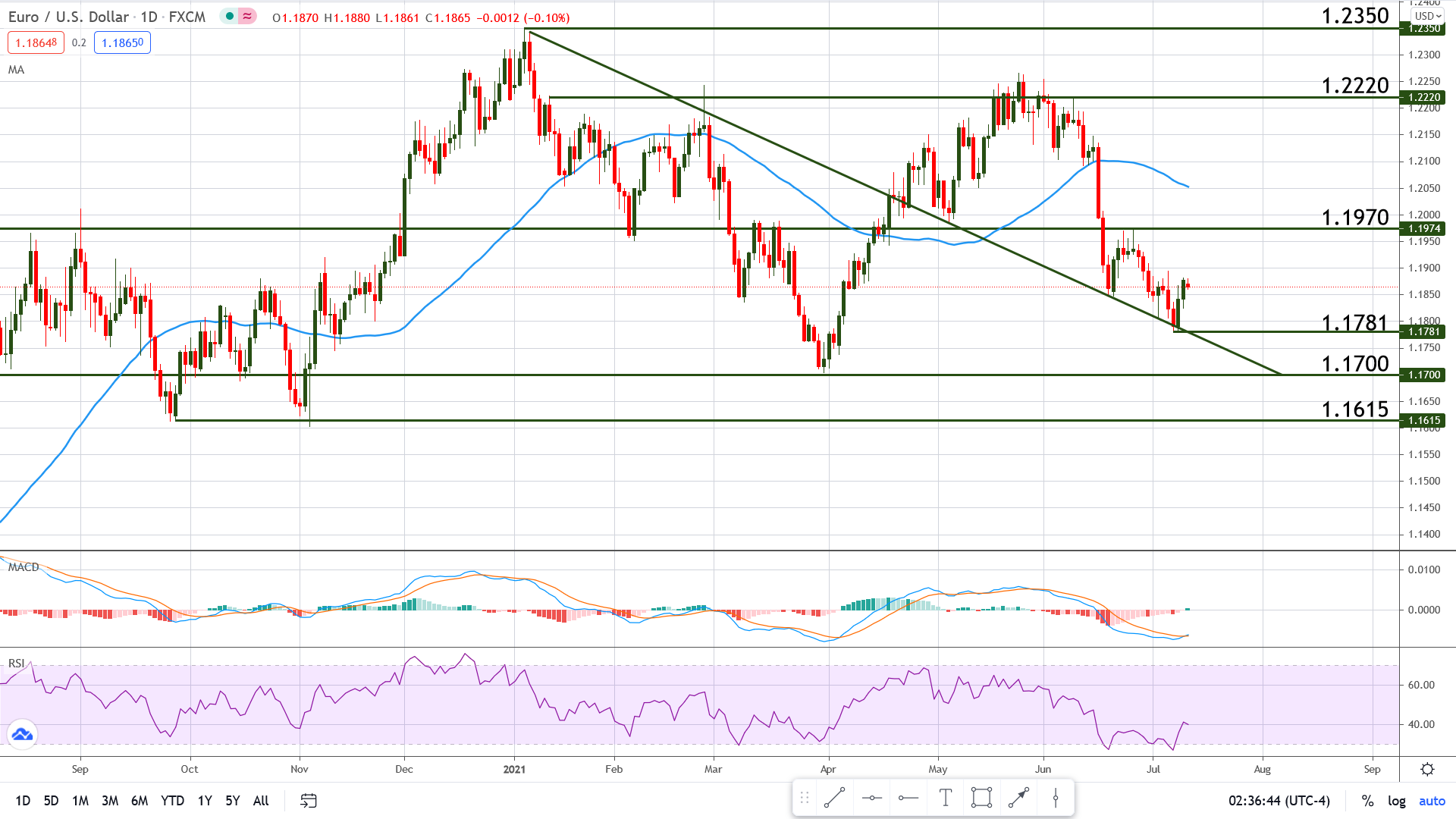US Dollar Gears up for a Jam-Packed Week
Inflation in the Spotlight
by Bogdan Giulvezan
Last week the EUR/USD retreated from a three-month low at 1.1781 as the US Dollar took a step back due to decreasing FED rate hike prospects, combined with a plunge in Treasury yields which saw lows of 1.25%.
The pair is currently trading at 1.1860 after a bounce at a long-term trend line but the week ahead is packed with strong catalysts that may bring important changes to the dollar’s behaviour. Front-and-center will likely be the U.S. inflation data scheduled Tuesday and Fed Chair Powell’s testimonies scheduled Wednesday and Thursday.
Key Events for the Week Ahead
With Monday’s calendar relatively bare, investors will turn to Tuesday’s U.S. Consumer Price Index, which may offer clues about the pace of the Fed’s tapering as well as the rate hike. Analysts expect the CORE version of the CPI to have risen 0.4% compared to last month’s reading, while the forecast for the “vanilla” CPI version is 0.5%. These are key gauges of inflation and strong data could speed up the tapering, as well as bring closer the rate hike date, which is currently projected for 2023. Both releases are is scheduled for Tuesday, July 13 at 12:30 pm GMT.
Fed Chair Powell will testify Wednesday, July 14 and Thursday, July 15 at 4:00 pm GMT and 1:30 pm GMT, respectively. On both occasions, the topic will be the Semi-Annual Monetary Policy Report and again, any clues regarding tapering or the rate hike will most likely reverberate across all USD pairs.
And the hits keep on coming as the trading week ends Friday, July 16 with the release of the U.S. Retail Sales data, scheduled at 12:30 pm GMT. The importance of this indicator comes from the fact that sales made at retail levels represent the biggest part of consumer spending, which in turn accounts for the majority of the country’s economic activity. The expected change is -0.5% for the Retail Sales and 0.4% for the CORE Retail Sales.
Technical Outlook – EUR/USD
The pair edged higher after bouncing on the long-term trend line seen on the Daily chart below but the overall bias is still bearish. The bounce seems more like a move generated by the overextension of the drop rather than the beginning of a stronger climb but if the Euro bulls manage to take price above 1.1970 resistance, this narrative may change.
The Relative Strength Index bounced twice on its 30 level, indicating that a retracement may occur, and the MACD lines are now coming together, showing that there is still room for the pair to climb. The end of the current retracement will be marked by the break of the previous low at 1.1781 but beware of false breaks because the week ahead is packed with key releases that could overshadow the technical side.
